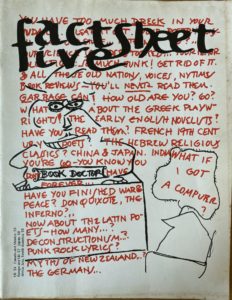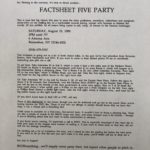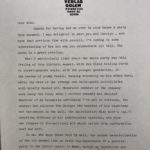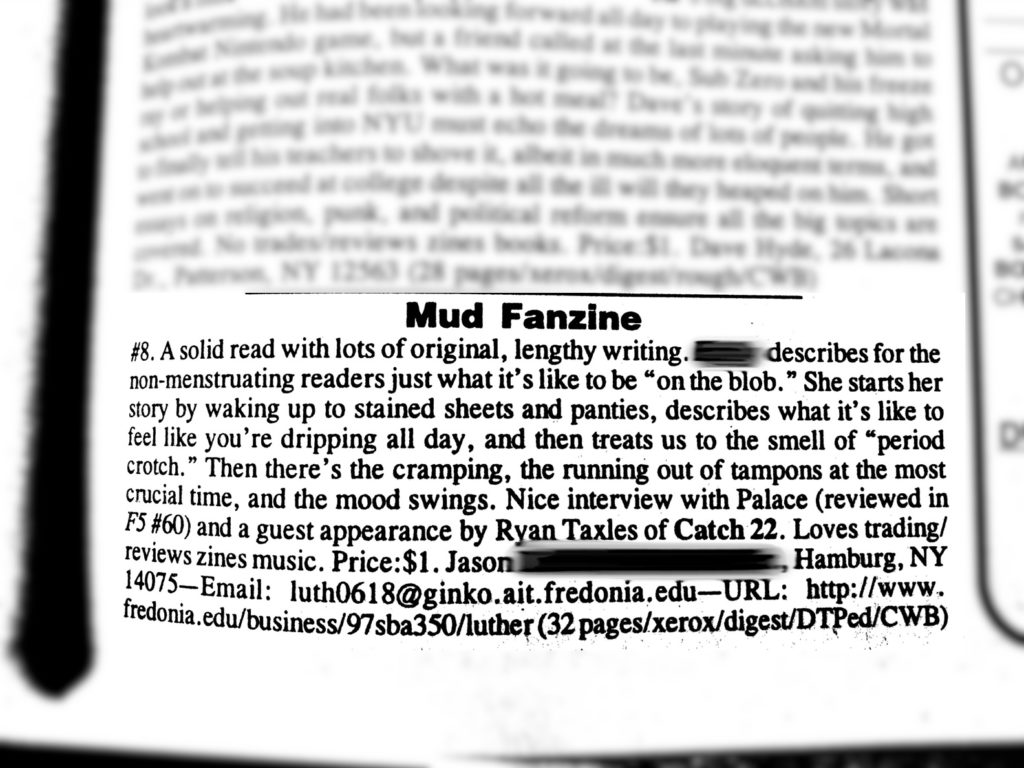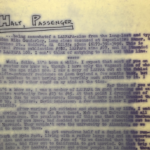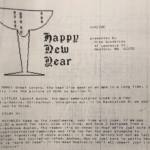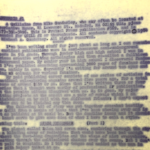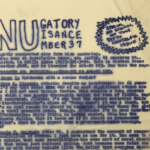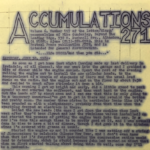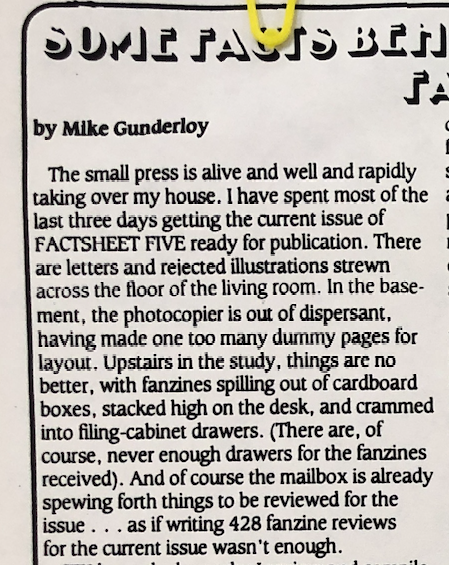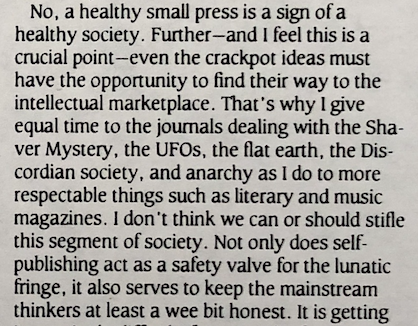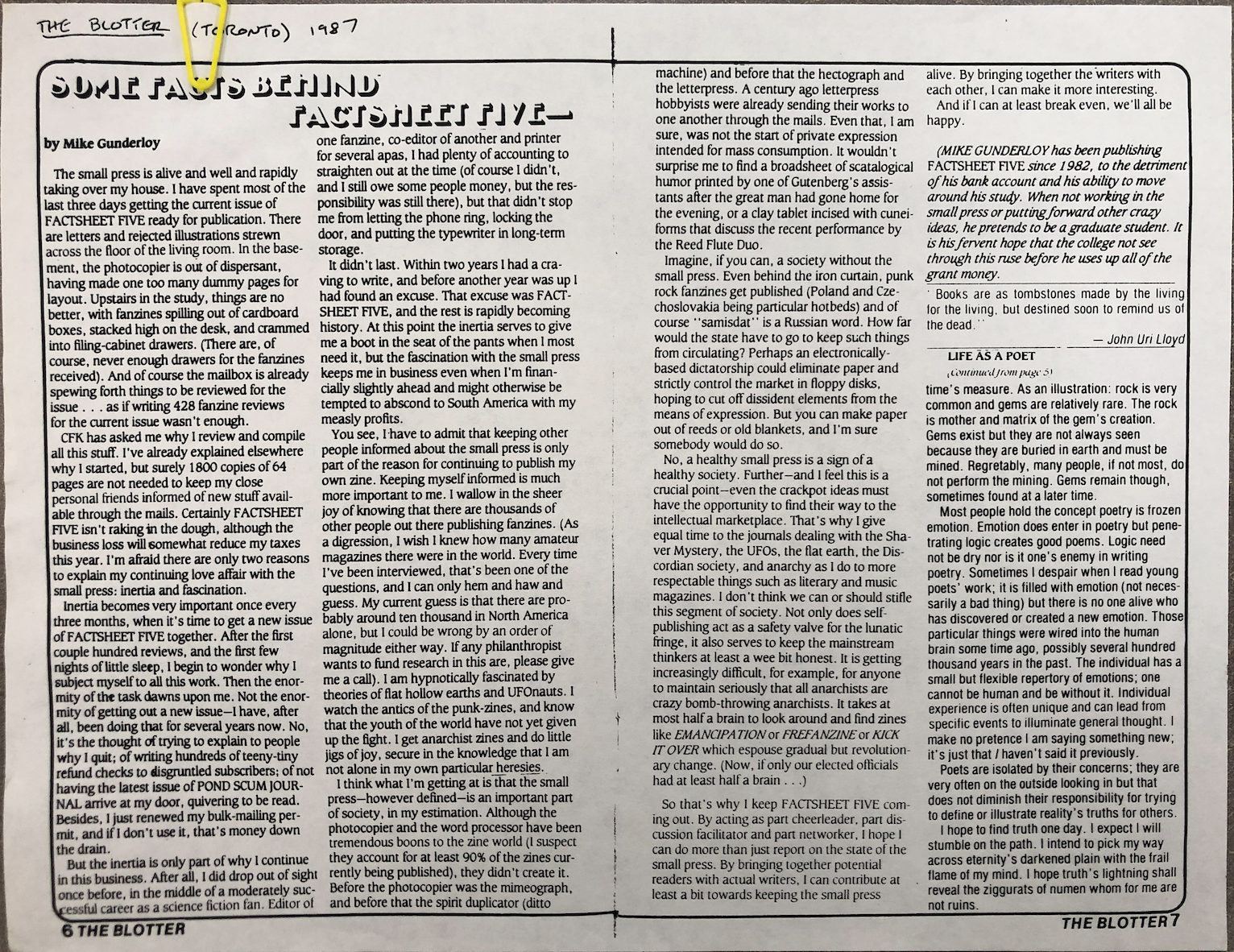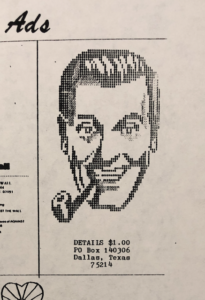So far this project has focused on the emergence of F5 in the early 1980s and Gunderloy specifically. I’m still working on trying to understand this emergence, especially the ways in which zines in the 70s and 80s were part of a wider, weirder assemblage that included not just punk and sci-fi communities, but counterculture, drug culture, and the occult (faux or not). In his book, Erik Davis dubs this high weirdness, “a mode of culture and consciousness that reached a definite peak in the early seventies, when the writers and psychonauts … pushed hard on the boundaries of reality—and got pushed around in return.” I’ve been slowly making my way through this book, which spends the first several chapters unpacking the uses and histories of “weird,” from the Shakespearian to the more modern manifestations via Phillip K Dick and HP Lovecraft. The title itself comes from yet another book, High Weirdness By Mail, published by Rev. Ivan Stang of the Church of Subgenius. In Davis’s discussion of this book he says:
“Stang’s volume was part of a micro-trend of fringe catalogs that helped map the labyrinth of the eighties underground, and which also included the Loompanics Catalog, Amok Books’ Dispatch series, and Mike Gunderloy’s metazine Factsheet Five. These and other compendia reflected an important mutation in the underground, as the counterculture of the sixties splintered into a proliferation of subcultures driven to announce themselves largely through alternate, DIY media: self-published books, cassettes, videos, comix, and, most importantly, zines. These circuits of marginal media were by no means restricted to post-sixties rebellions, but also included a rainbow array of American alternatives to mass culture, many of them religious, mystical, and occult.”
Davis’s theoretical and historical contributions are useful for understanding said mutation, and my hope is that it will shed some light on a period in zine history that is not well documented, but that has a through line worth tracking via F5, as subcultures continued to splinter, even within themselves.
Indeed, as chance would have it, I’ve gotten access to the final issues of F5 this week, when the magazine was published by R. Seth Friedman and supported by the likes of Chris Becker, Jared Pore, Larry-bob (who published Holy Titclamps), and several others.
Becker — who helped curate a wonderful exhibit on zines for Ann Arbor Public Library this year — was then listed as “managing editor” for #62, and “editor” for #63 and #64, the final two issues. In an essay in #64, the final issue, called “What I’ve Really Learned from Zines,” Becker notes that while zines still served as a viable alternative to mass or mainstream media, and predicted that the web would not replace print zines, they also lacked diversity and were tragically entrenched and fragmented, essentially not being weird enough: “Where is the zine about model railroading written by a retired family man who goes to church on Sundays? Or the one by a Mexican immigrant that reflects different cultural ideas?” Instead, Becker seemed to argue that zines were limiting themselves to their own niche obsessions, and at one point implies weirdness is akin to antisocial behavior, chastising “inexplicably weird, mean, and persistent” readers who sent harassing or antagonistic mail to F5 when they got a bad review or F5 didn’t arrive at their mailbox as promised.
In short, I guess I’m left wondering: what did “weirdness” mean in 1982 versus 1998?
In a 2019 interview with Mark Maynard (who published Crimewave U.S.A.), Becker ponders whether F5 became “antithetical to zine culture” in how it organized, centralized, and arbitrated zines in one definitive space. Yet, at that time in the late 90s such larger philosophical questions weren’t explored because of the endless labor that was required to keep up with the zines that were pouring in every day. Similar to Gunderloy, the success of F5 — and the work required to keep it afloat — led to its demise. As Becker notes to Maynard, Becker’s departure from F5 nudged Friedman to stop publishing as well. Interestingly, many of these former publishers and editors went on to be coders, possibly due to their “drive for organizing data,” as Becker reflects, which again speaks to the ways in which zines were never limited to print.
A few other interesting notes from perusing these final issues:
- There’s some weird tension about whether #64 would really be the end of F5. Although the cover includes the provocative question “The End of Factsheet5?” Friedman’s editorial assures readers not to worry, that “the magazine will almost certainly continue,” a sentiment observed in his retrospective on F5 while also exaggerating the debilitating physical effects of reading “50,000 zines” over the course of publishing F5. But continuing F5 required a buyer — or at the very least a willing publisher who would take it over, which obviously never happened.
- However, in that same editorial Friedman announces his intentions get back into publishing his own zine through The Jeroboam, a new zine “devoted to [his] new passion, wine.” Turning the page, readers encounter a half-page ad for said zine, boasting about its lack of pretense. I can’t be sure, but some quick and basic web searches suggest The Jeroboan never actually materialized. Anyone know?
- Friedman’s lengthy history of F5 in #64 is interesting and worthy of its own post here. He discusses growing up in NYC with punk and encountering F5 at See Hear, he shares his knowledge of the Gunderloy years and the transition to Hudson Luce (who is thrown under the bus imho).
- Issue 59 came out in
September February 1995; Issue 64 — the final issue — was published in the summer of 1998. This is noteworthy for me personally as such dates mirror some my own significant activity in zine publishing. When I entered college in fall of 1995 I was deeply invested in making Mud Fanzine; however, I stopped publishing just about the same time when F5 shut down in 1998. When I started this project I guessed that maybe I was once reviewed in F5, but much to my surprise, these back issues show that was reviewed not once but twice. Becker reviewed Mud #6 in F5 #61 for the Music section (because I had interviews with Tortoise, Ui, and GvsB); however, Mud #8 (reviewed in F5 #62) was in the Medley section, reserved for zines that were “A little bit of everything…Personal stories, a little poetry, a page of reviews, some unique art, and of course those patented zine rants. All mixed up in traditional zine style.” That issue indeed included a rant about menstruating (written by my then-GF) and an interview with Will Oldham of Palace (now Bonnie Prince Billy). Check them out:
